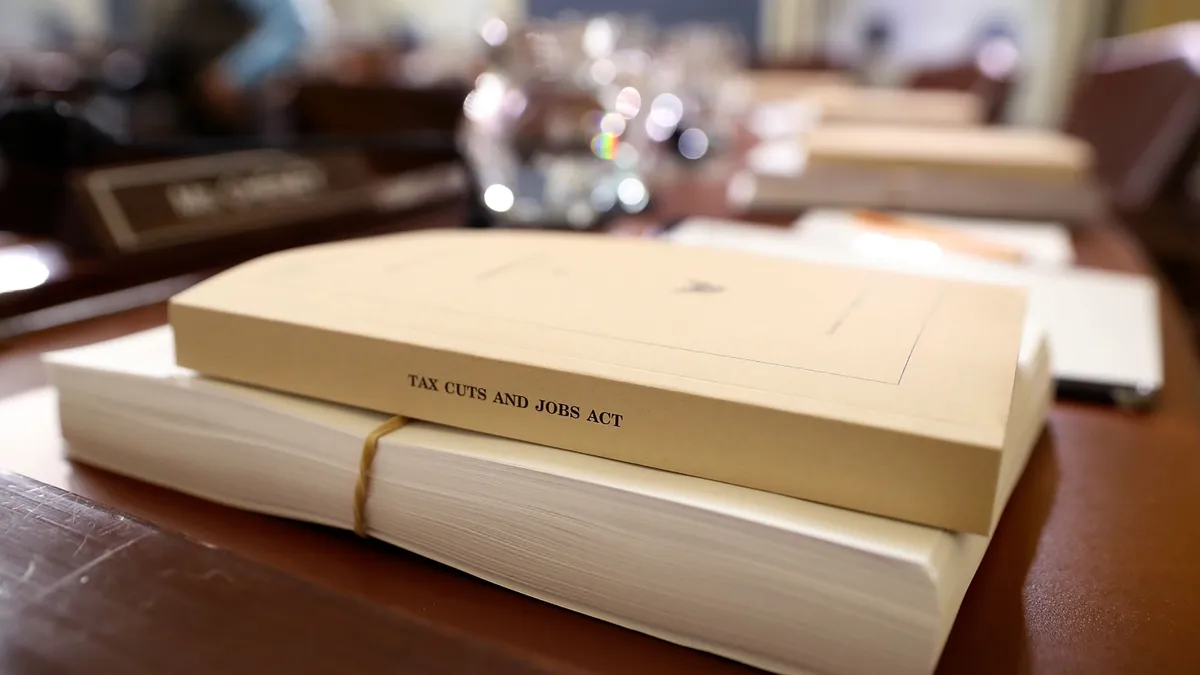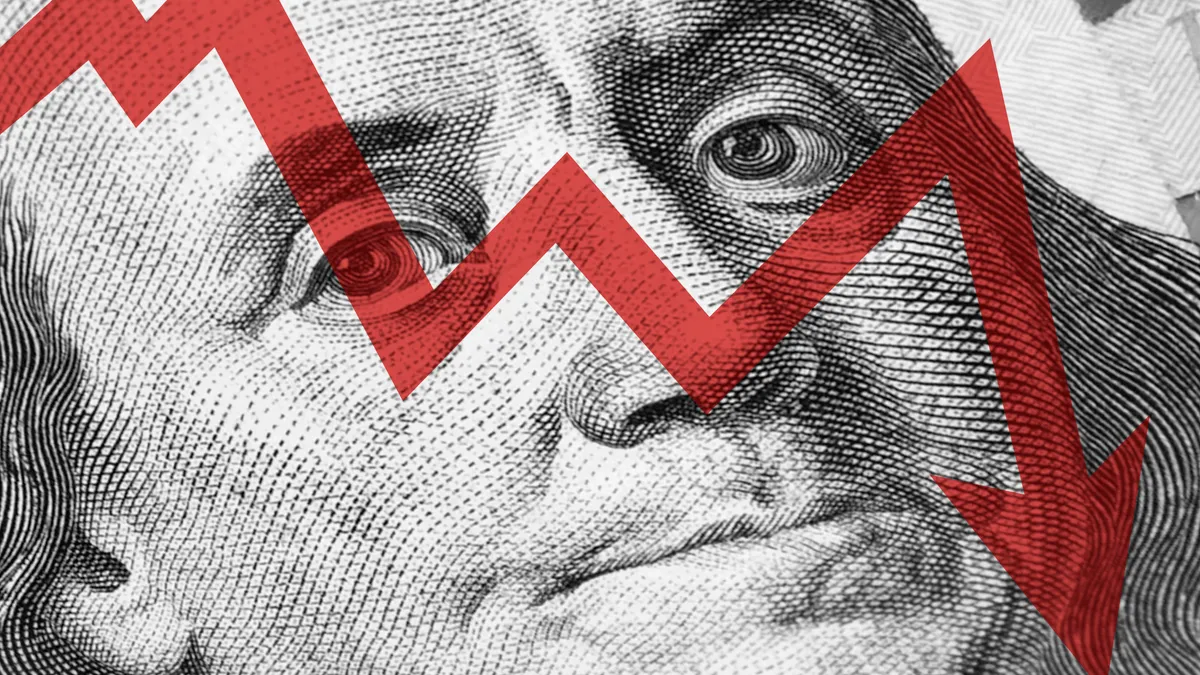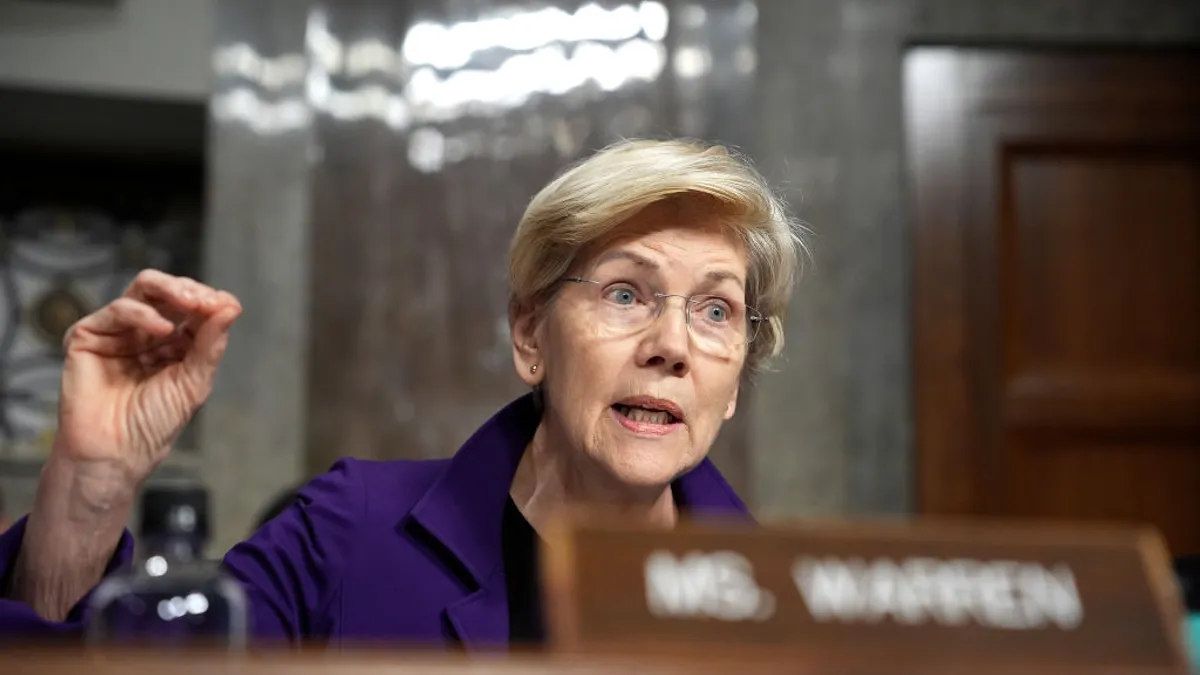An overhaul of U.S. tax law six years ago saved big pharmaceutical companies billions and reshaped how they profit from lucrative patents held overseas. Policy changes on the horizon could further shift how pharmas set up their international operations.
At the urging of economic policy groups, industrialized countries aim to impose a global minimum corporate tax rate of about 15%. They hope to end a “race to the bottom” that has allowed multinational corporations like Pfizer, AbbVie and Eli Lilly to pay single-digit or lower effective tax rates in recent years.
But the U.S. is lagging behind in instituting the new rules, which will start to take effect in January in some countries. A delay could cost the Treasury $39 billion over five years.
For drugmakers, the international agreement could disallow U.S. R&D tax credits from counting against the minimum, potentially raising their bills and forcing them to rethink where they base their laboratories.
“There’s this wide band of uncertain outcomes,” said Daniel Bunn, CEO of the Tax Foundation, a policy research group.
‘Territorial taxation’
The Tax Cut and Jobs Act of 2017 was the first major revision to U.S. tax law since 2001. Since it was put in place, the effective tax rates paid by major U.S. drugmakers have declined substantially. Actual tax payments also dipped for several years before returning to 2016 levels last year.
The law, known as TCJA for short, made several adjustments that reduced large corporations’ tax burden. The headline change was a lowering of the corporate tax rate from 35%, one of the highest in the world, to 21%. (President Joe Biden has repeatedly sought to raise the rate to 28%, but Congress has rebuffed him.)
Large pharma tax rates have fallen since TCJA law
The TCJA also changed how the U.S. taxes profits of overseas subsidiaries, offering reduced levies to incentivize the return of those profits to the U.S. Under the law, companies are also encouraged to bring some of their overseas activities back to the U.S.
Ultimately, the new tax structure attempted to transition the U.S. to a “territorial” taxation system, under which companies primarily pay taxes on profits in the countries where they are earned.
AbbVie, Pfizer and Regeneron Pharmaceuticals especially benefited from the law, reporting significant decreases in their tax burdens. For 2018 — the first full year under the TCJA — AbbVie and Pfizer received more in refunds than they paid in taxes, while Regeneron’s tax expense was slashed by nearly three-quarters.
The law’s encouragement of companies repatriating overseas profits spurred significant spending, too. For example, in January 2018, AbbVie announced a $2.5 billion capital project investment in the U.S., a onetime charitable donation of $350 million and accelerated pension funding of $750 million. Those announcements were followed weeks later by a much larger financial commitment to AbbVie shareholders in the form of a new $10 billion share buyback.
“With the TCJA, that low effective tax rate became even lower, with less paid to the U.S. Treasury and the amount of pharmaceuticals imported increased,” said Brad Setser, senior fellow at the Council on Foreign Relations.
Targeting tax arbitrage
The tax architecture created by the TCJA could be undercut by the global effort to set an international minimum corporate rate of 15%.
Companies, particularly those whose profits rely on intellectual property, have in the past housed patents in subsidiaries located in low-tax countries. By reporting corporate profits in those low-tax areas, they were able to reduce their overall tax burdens. The practice can further minimize reported profits in the U.S. because the U.S. parent corporation will sometimes pay royalties, which are tax deductible, to their subsidiaries in low-tax countries. Industries like manufacturing, which rely heavily on capital investment that can’t easily be moved from country to country, were comparatively disadvantaged in this game of tax arbitrage
After years of work, the Organization for Economic Co-operation and Development, an intergovernmental organization of 38 high-income countries, in March 2022 unveiled a plan to address “base erosion and profit shifting.” In addition to seeking a 15% minimum tax rate, the OECD recommended a set of rules that would ensure rates don’t fall below that level in any country. The proposed mechanisms would allow nations to increase their taxes if others don’t maintain the minimum rate.
Many countries in Europe and the Asia-Pacific region have implemented or made progress toward setting up the minimum tax rules, dubbed “Pillar Two” of the global tax project. Some will take effect Jan. 1. However, in the U.S., the outlook is unclear because Congress and the White House probably won’t be able to come to an agreement on a package until 2025 at the earliest.
The U.S. stands to lose tax revenue after global enactment of Pillar Two, according to an analysis by Congress’ Joint Committee on Taxation. The rub is that the losses are greater if the rest of the world enacts Pillar Two and the U.S. doesn’t — $39 billion over five years versus $7 billion if the U.S. does.
That difference could be essential in the negotiations over any big budget, tax and spending package, because under congressional rules spending increases and tax cuts need to be offset by spending cuts and revenue increases elsewhere.
Total tax paid by large U.S. pharmas fell, then rose after TCJA
| 2016 | 2018 | 2020 | 2022 | |
|---|---|---|---|---|
| AbbVie | $1931 | ($490) | ($1224) | $1632 |
| Amgen | $1441 | $1151 | $869 | $794 |
| Biogen | $1237 | $1426 | $992 | $633 |
| Bristol Myers Squibb | $1408 | $1021 | $2124 | $1368 |
| Eli Lilly | $636 | $530 | $1036 | $652 |
| Gilead | $3609 | $2339 | $1580 | $1248 |
| Johnson & Johnson | $3263 | $2702 | $1783 | $3784 |
| Merck & Co. | $718 | $2508 | $1340 | $1918 |
| Pfizer | $1123 | ($266) | $370 | $3328 |
| Regeneron | $434 | $109 | $297 | $520 |
| Vertex | $17 | ($1487) | $405 | $910 |
| SUM | $15817 | $9577 | $8232 | $16697 |
NOTE: Figures are in millions of dollars, with negative values represented by parentheses. SOURCE: Companies
Pharma impact
There is some good news for U.S. pharma companies. One of the TCJA’s mechanisms for taxing ex-U.S. profits on intellectual property — called global intangible low-tax income — qualifies as part of other countries’ 15% minimum tax rate.
Less positively, the U.S. approach to incentivize private-sector R&D could be put at a disadvantage. While refundable tax credits and subsidies aren’t penalized under Pillar Two rules, the U.S R&D tax credit — which allows companies to lower their income tax payments based on how much they spend on R&D — is a form of disallowed “nonrefundable” tax credit.
That means that if the R&D credit lowers a U.S. pharma’s effective tax rate below 15%, other countries can raise their rates on that company to make up the difference through a mechanism called the “under-taxed profits rule.” Companies with a heavy U.S. R&D presence could rethink their investments as a result.
“Because of how the OECD counts the U.S. R&D tax credit, that would allow some country [that instituted an undertaxed profits levy] to collect more tax revenue, which is not great for the U.S. base,” said Anne Gordon, vice president of international tax policy at the National Foreign Trade Council. “At some point companies might rethink what countries they do R&D in.”
Critics of the Pillar Two plan and the Biden administration’s negotiations with other OECD nations have seized upon this provision in Pillar Two rules.
“In other words, the OECD high priests have condemned tax competition, but blessed government subsidies,” Sen. Mike Crapo, senior Republican on the Senate Finance Committee, said in a May hearing on pharma industry taxes. “The global tax code creates a more supercharged ‘race to the bottom’ — a race for increased subsidies in government-favored industries.”
A spokesperson for the Pharmaceutical Research and Manufacturers of America said the lobby group doesn’t get involved on tax issues. The Biotechnology Innovation Organization, a trade group for the biotech industry, didn’t respond to BioPharma Dive’s request for comment.
Looking to Congress
R&D tax credit headaches notwithstanding, experts see an opportunity in how the TCJA encourages U.S.-based drugmakers to keep more of their taxable assets at home.
By lowering U.S. corporate taxes and moving to the territorial system, the TCJA leveled the playing field somewhat. But it may not have yet resulted in a lot of business activity flowing back to the U.S., Bunn said.
“Companies for 30-plus years have been utilizing various structures to mitigate the high U.S. corporate tax rate,” he said. “Over that period of time, the companies have built up a lot of locations. When you think about what the law change in 2017 could have done, you couldn’t immediately uproot a lot of those structures.”
Changing the U.S. tax code to mirror Pillar Two principles could change incentives further. “U.S. businesses will lean toward the simplest way to pay their top-up taxes. A company may want to simplify taxes by paying in fewest jurisdictions,” Bunn said.
Setser likewise sees this as a chance to push drugmakers to keep their taxable assets in the U.S., particularly if combined with other laws. “Once companies are basically paying 15% no matter what, I think you could do things that would make it much harder for them to transfer intellectual property abroad,” he said.
The U.S. is not likely to make any major changes to the tax code before the next national election in 2024. Expiring provisions from the TCJA in 2025 will give Congress and the White House an incentive to pass a new tax and budget package, however, in which the U.S. approach to Pillar Two could be outlined.
“I think Congress has some runway to think about what options there are for us to lean into the incentives that … we are trying to model,” Bunn said.






















